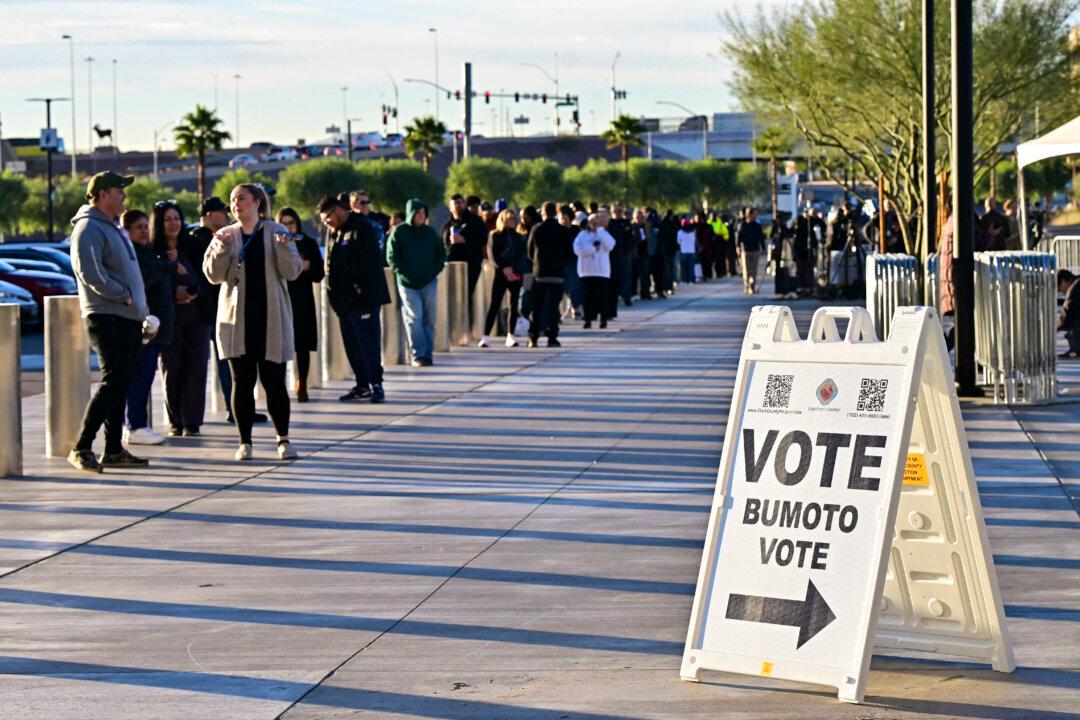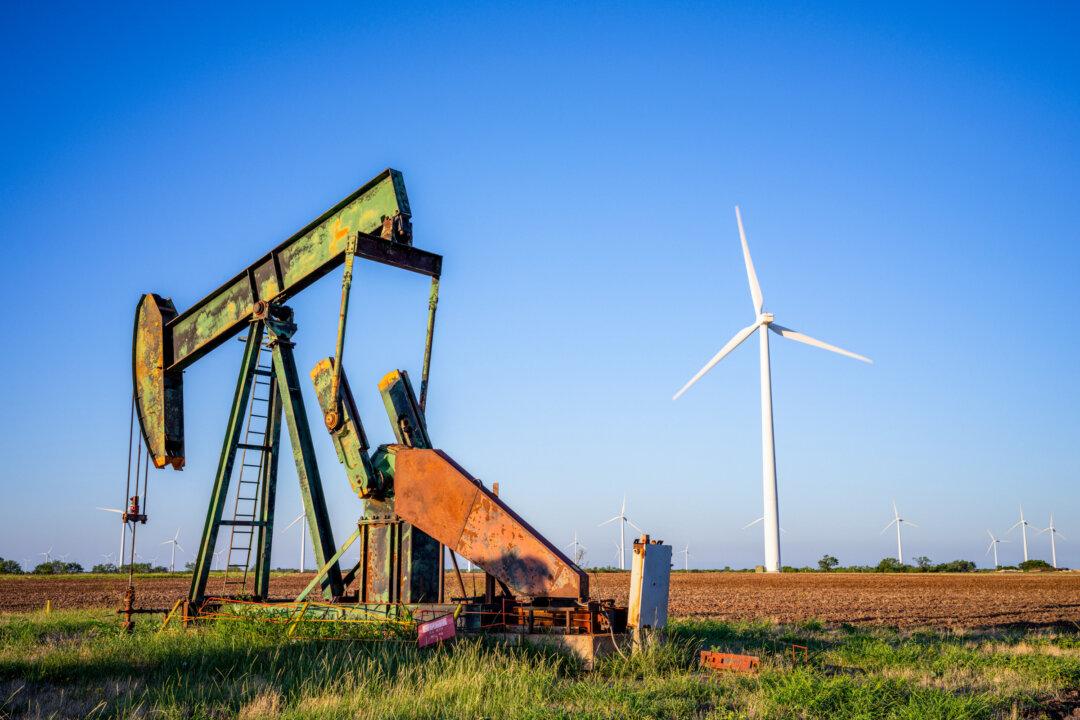LAS VEGAS—More than 1 million Nevadans—nearly 53 percent of the state’s registered voters—have already cast ballots in the 2024 election, with Republicans turning out in higher numbers than Democrats in a triple-tier battleground state where nonpartisan voters will decide the Nov. 5 election.
According to the Nevada secretary of state’s daily 9 a.m. update on Nov. 4, 1,072,640 registered Nevadans had voted either by mail or during the Oct. 19–Nov. 1 early voting period.
Registered Republicans had cast 405,602 of those votes, 43 percent of the tally, with 247,263 voting in-person early and 158,339 voting by mail, according to the state data. That is approximately two-thirds—67 percent—of the state’s 600,000 registered Republicans.
The GOP turnout is nearly 43,200 more than the 362,424 registered Democrats who have already voted, giving Republicans a 4-percentage point lead between the two parties in the tallies cast before Election Day.
More than 150,000 Democrats voted early, and more than 212,000 have done so by mail, meaning that 59 percent of the nearly 610,000 registered with the party have already voted.
While GOP voters cast nearly 100,000 more in-person early votes, Democrats have mailed in about 65,000 more ballots, the secretary of state’s office documents.
Democrats were trailing Republicans in the turnout by as much as 6 percent before the last few days of the two-week early voting period.
The early vote turnout edge is a reversal of trends in recent election cycles where Democrats often build a “blue wall” in mail-in ballots that Republicans fail to overcome in Election Day turnout.
The start of 2024 Election Day is ahead not only in voter turnout but also in registered voters.
According to a Nov.1 statement by Nevada Secretary of State Francisco Aguilar, there was an increase of 60,076 active registered voters in October, boosting the state’s enrollment to 2,035,166 “active” registered voters—2.34 million are registered, but about 300,000 haven’t voted in repeated election cycles—609,954 are Democrats (29.97 percent); 600,754 are Republicans (29.52 percent); a third, 675,982, are nonpartisan; and the remainder are with assorted minor political parties.
The trends have GOP boosters confident that former President Donald Trump could be the first Republican to win the Silver State since 2004, challenger Sam Brown could unseat Sen. Jacky Rosen (D-Nev.), and at least one Democrat-held Las Vegas-area congressional seat could be flipped in the Nov. 5 election.
But the wild card is nonpartisan voters—now Nevada’s largest voting constituency.
According to state data, 304,614 Nevadans not registered with either party or with third parties have voted in the election, 159,096 by mail, and 145,518 in-person during early voting.
That means more than 55 percent of nonpartisans—more than 370,000 of 675,982 registered to vote—have not voted yet. Comparatively, less than 32 percent of registered Republicans haven’t voted, and 41 percent of those signed on with the Democrats have yet to cast ballots.
That nonpartisan turnout—and who they vote for—will be the deciding factor in determining who wins and loses Nevada’s Nov. 5 election.
Unlike in past elections, mail-in ballots are already being counted, and county election officials will begin counting early in-person votes the morning of Election Day—a policy change enacted in April that should allow results to be posted sooner after polls close at 7 p.m. The first release of numbers, including the early vote tallies, should be substantial.
In 2020, the Nov. 3 Nevada presidential race was not called until four days after Election Day because hundreds of thousands of mail-in ballots still had to be counted after polls closed. Then-presidential candidate Joe Biden won the 2020 election in Nevada by 2.39 percent, about less than 33,580 votes.
Nevada is one of the nation’s best bellwether states. The candidate who won the Silver State has won the White House in 27 of the past 30 presidential elections, the last time in 2016.
While Vice President Kamala Harris has consistently, but narrowly, led in Nevada polls since succeeding Biden as the Democrat’s nominee in July, two of four late surveys showed Trump suddenly surging as a clear favorite.
In an Atlas Intel Nov. 1–2 survey, 782 likely voters had Trump leading by 5.5 percentage points, and a Susquehanna Oct. 28–31 poll of 400 likely voters had Trump up by a breakaway 6 percentage points.
Meanwhile, a New York Times/Siena Oct. 24–Nov. 2 survey of 1,010 likely voters had Harris up by 2–3 percentage points, and an Emerson Oct. 29–Oct. 31 poll of 700 likely voters put her up by 1 percent.
Six proposed constitutional amendments on Nevada’s ballot are also driving turnout, including measures that would adopt a ranked voting primary system, require a voter ID to cast ballots, and enshrine the right to abortion access.
Nevada is one of 10 states where voters will see an abortion measure on their Nov. 5 ballots in the wake of the U.S. Supreme Court’s 2022 decision overturning Roe v. Wade.







